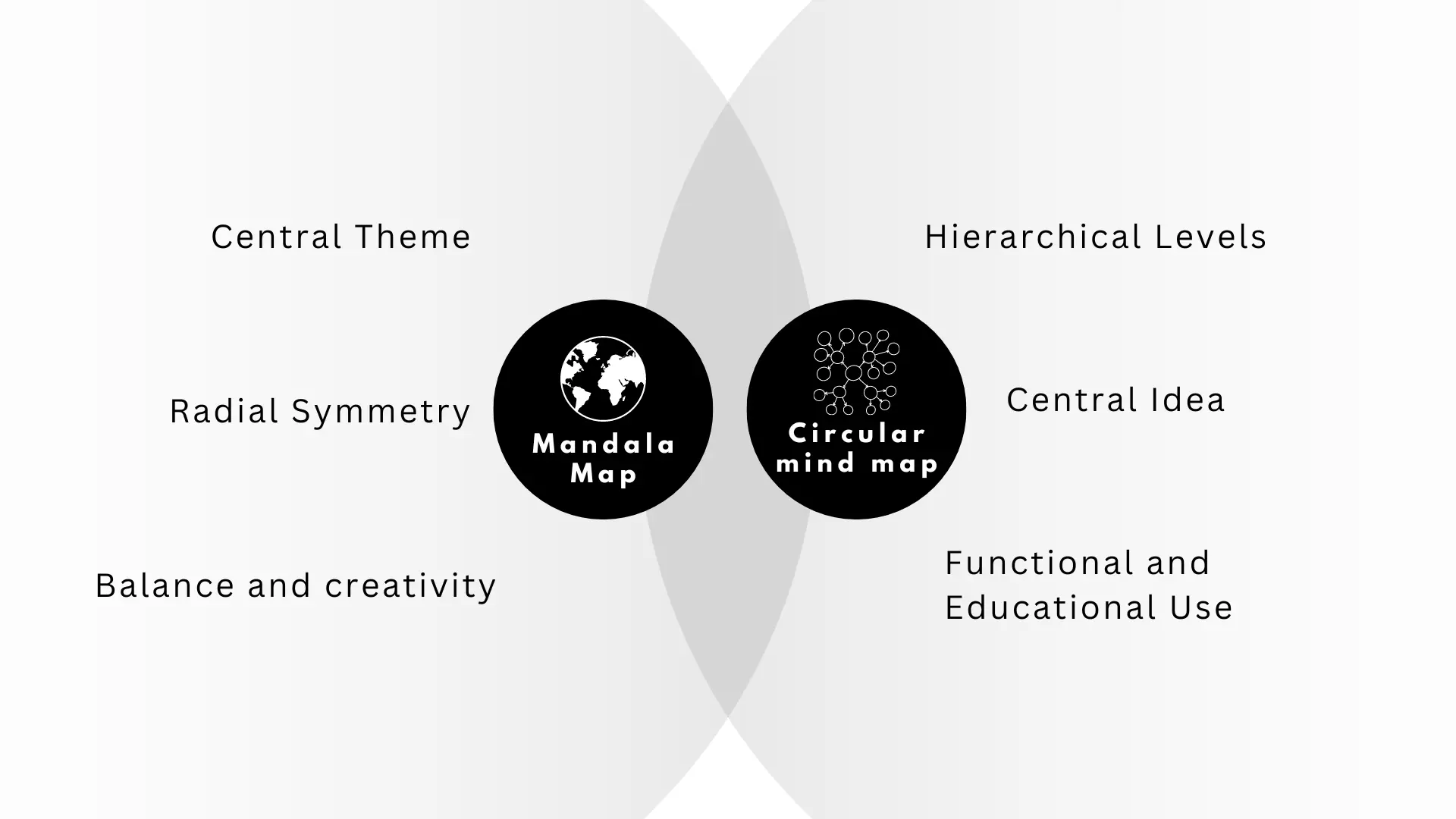Introduction
If you’ve ever found yourself buried under a mountain of notes and articles while working on a literature review, you know the struggle is real. Organizing your research, connecting the dots, and making sense of it all can be a headache. But what if I told you there’s a way to simplify the entire process and make it, dare I say, enjoyable? Enter AI-powered mind maps to help you streamline your research and get your work done faster.

Image from: canva
The Traditional Literature Review Process
Imagine diving into a sea of research papers, books, and articles, all while trying to keep your head above water. That’s the traditional literature review process in a nutshell. It’s like being on a never-ending treasure hunt where the treasure is buried under mountains of information. You spend hours, even days, manually collecting and sorting through sources, trying to connect the dots and make sense of it all. It’s tedious, and let’s be honest, a bit of a nightmare.
The biggest challenge? Staying organized. With so much data coming at you from all directions, it’s easy to feel like you’re drowning in it. Important details slip through the cracks, and before you know it, your research is a tangled mess. You end up spending more time trying to untangle your thoughts than actually analyzing your findings. It’s a frustrating process that leaves many researchers feeling stuck, spinning their wheels without making much progress.
AI- Powered Mind Maps, The Efficiency Game Changer
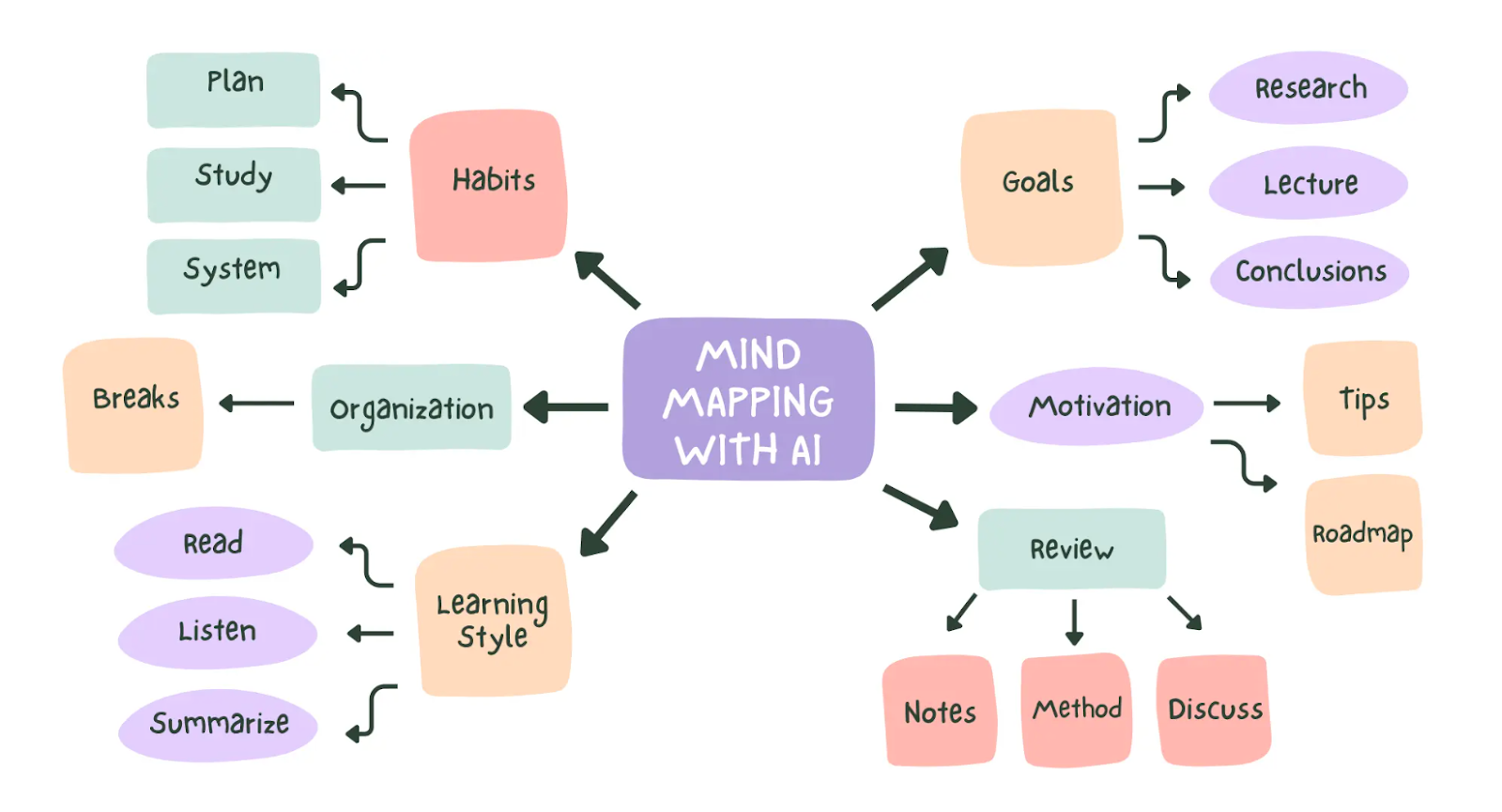
Image from: mindmap.guide
Instead of drowning in a sea of research notes, you’ve got an AI-powered assistant that does the heavy lifting for you. That’s what AI-powered mind maps are all about. These smart tools take your jumbled mess of notes, articles, and ideas and instantly organize them into a clean, visual map that’s as easy to navigate as a Sunday stroll.
Why are they such a game changer? First off, they save you a ton of time. No more hours spent manually sorting through sources and trying to make sense of it all—AI does it in a flash. Plus, these mind maps keep your research organized and at your fingertips, making it easy to spot connections and gaps in your work. And clarity? You’ll see your research in a whole new light, with everything laid out in a way that makes it simple to grasp even the most complex topics.
So, how do they work their magic? It’s all about the tech behind them. AI algorithms analyze your notes and sources, automatically categorizing and linking related information. They create a visual map that evolves as you add more data, keeping everything updated and easy to understand. In short, AI-powered mind maps turn research chaos into clarity, letting you focus on what really matters—your insights.
Overcoming Common Concerns
You might be thinking, “Is AI really reliable?” or “Can I really trust it to organize my research?” The short answer is yes. While it’s always good to double-check your AI’s work, these tools are designed to enhance your research, not replace your critical thinking.
Or are you worried that an AI mind map might feel too rigid or one-size-fits-all? Don’t be. Most tools allow you to customize your map to fit your unique needs, so you’re always in control.
How to Get Started
Choosing the right tool can make all the difference, maybe we can take Research Flow, as an example. Research Flow is packed with features that take the hassle out of organizing your thoughts. It’s user-friendly, smart, and designed to work seamlessly with your research process.Ready to turn your research chaos into streamlined brilliance?
Step-by-Step Guide:
1.Upload the literature you need: Start by uploading the literature. ResearchFlow’s AI begins analyzing and pulling in relevant sources instantly.
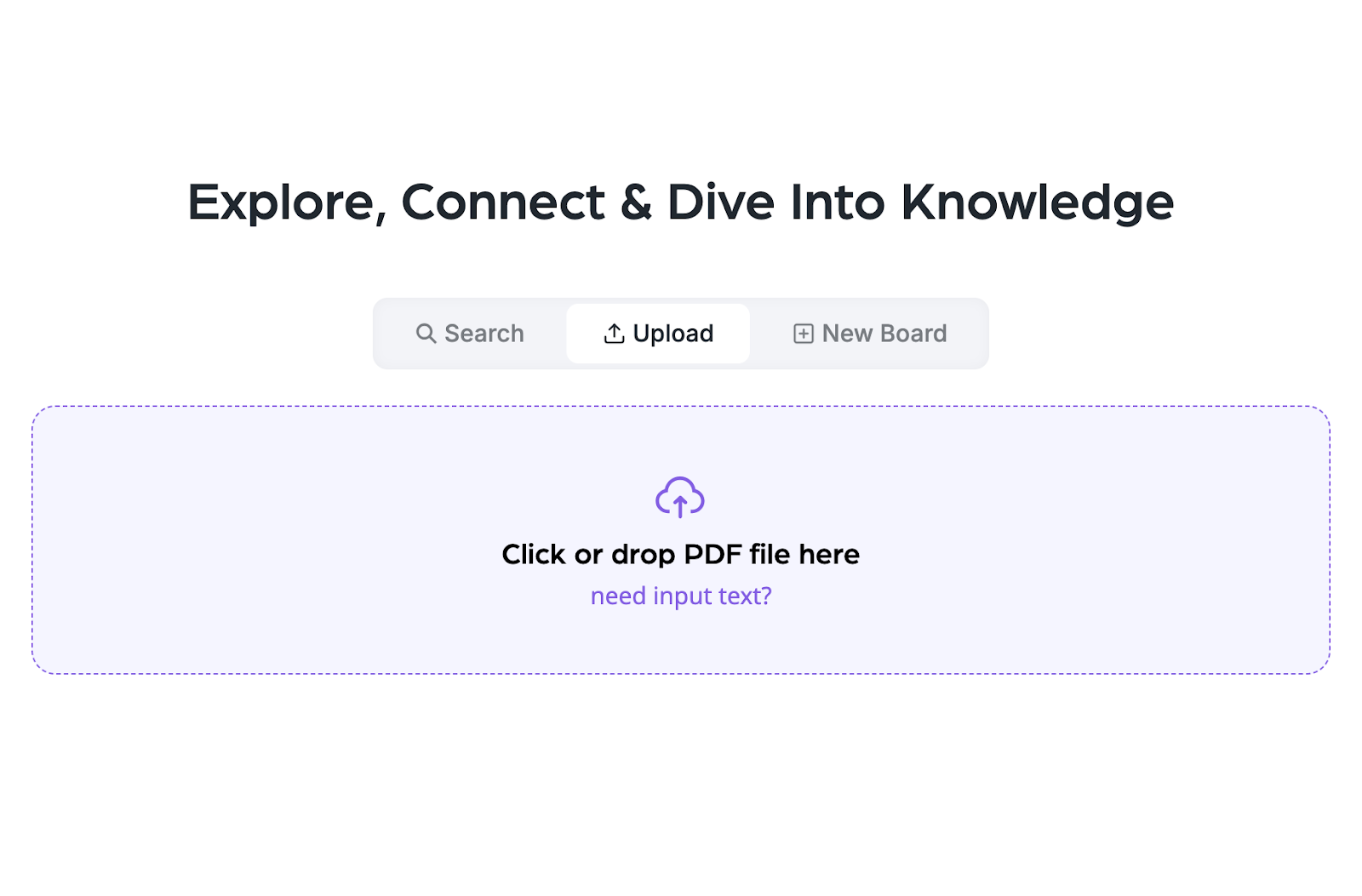
2.Visualize with Mind Maps: Watch as the literature transform into an interactive mind map. This visual representation makes it easier to spot connections and see the big picture.
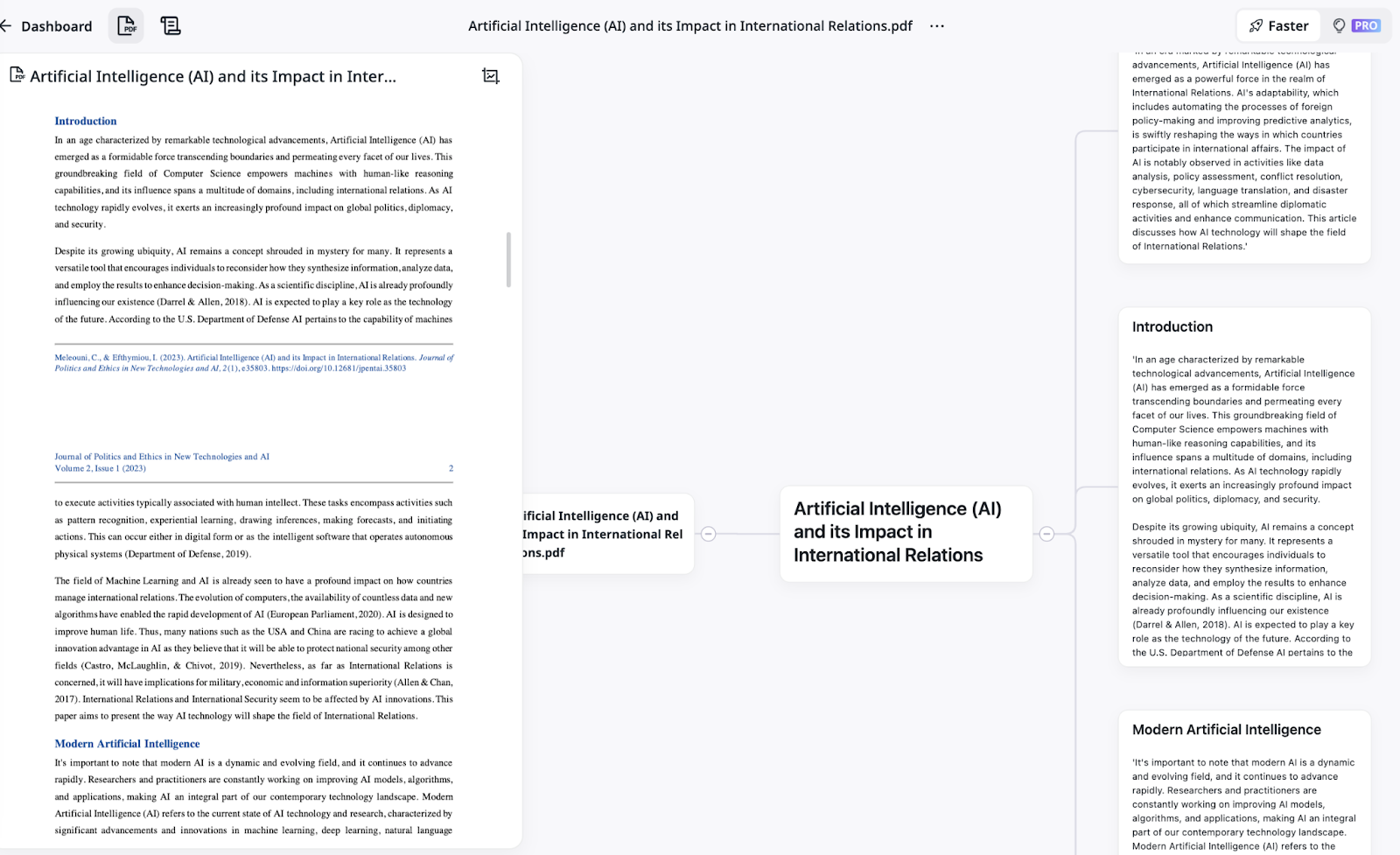
3.Ask AI more questions:Dive deeper by asking AI specific questions about every part of the mind map. It will provide detailed answers, helping you uncover new insights and refine your focus.
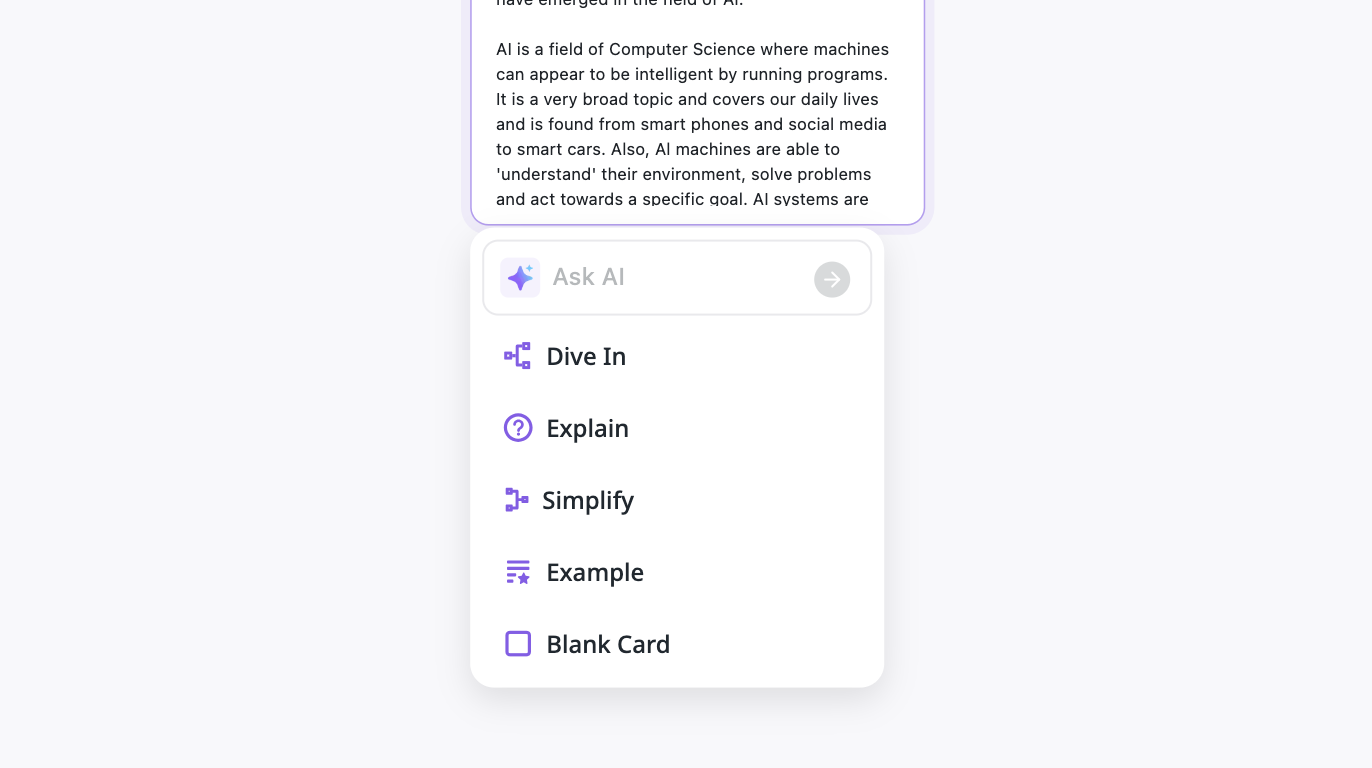
Conclusion
If you’re ready to take your research game to the next level, it’s time to give AI-powered mind maps a try. They’re easy to use, incredibly efficient, and they just might make your next literature review the easiest one yet. So why wait? Dive in and see how these tools can transform your workflow today.



.Dms6sGst_ulvKc.webp)
